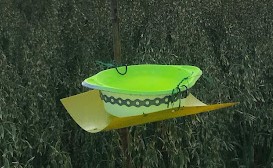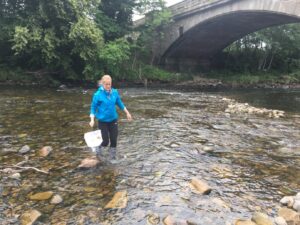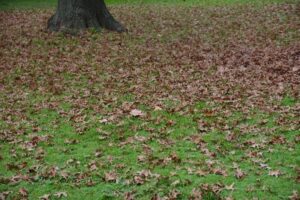After coming up with some of the ideas outlined in my last blog post, I emailed them to my tutor and staff supervisors to indicate my more detailed plans. In brief, I intend to have a series of three lessons, the first will give students a broad introduction to UK insects, and in the second lesson they will then go out to sample and identify insects from two contrasting habitats, before analysing and presenting the data they collect, and discussing the results. They will consider the wider implications of their findings, and learn about the future outlook for insects in the UK, in the context of habitat destruction, pesticide use, and climate change.
I met with my staff supervisors on the 17th of November to discuss these plans, and I found that contact had been made with Liberton High School as a potential client, who have expressed interest in my project. In the meeting, we also discussed any potential problems which could occur in my project, and how the insect sampling could be done in a way that is more closely aligned to the benchmarks set out in the Scottish Curriculum Experiences and Outcomes.
Meeting reflections
Potential obstacles include the delivery date of my project, as the insect sampling will be most effective when conducted in spring/summer, when there is greater activity. However, if the client is flexible, and I plan my time effectively, it will be possible for me to conduct this part of my project in March, when there will be some insect activity. A further issue is if insufficient insects are collected by the students to identify, record and analyse. This could potentially be overcome by providing students with a dummy dataset, so they still have data to analyse even if they collect insufficient insects themselves. If insufficient insects are collected for them to identify, I could overcome this by bringing in some of the insects I collected as part of my dissertation, so the students still get a chance to practise using identification keys.
Before my meeting with my staff supervisors, I had only thought of one method of sampling insects for the students to use – involving placing a yellow plastic bowl filled with water and washing up liquid for 24 hrs in a slight depression in the ground, or directly on the ground with a rock inside to stop it blowing away. After the 24 hours, the bowls would be collected in and the insects inside identified.

An example of a yellow bowl (AKA a ‘pan trap’) which can be used trap insects. I used this method to collect data for my dissertation, and suspended the bowl in the air from a pole, but they can also be placed on the ground. (“Pan trap” by Bethany Hickling is licensed under CCBY)
However, following the meeting I thought of other insect sampling methods which could be used, including kick sampling river invertebrates, and pitfall traps and leaf litter sampling of ground invertebrates. I will outline all these potential methods to the client, so we can choose the one(s) which will work best for the school.

Me, kick sampling for invertebrates as part of a university summer project! (“Kick sampling” by Jill Hickling is licensed under CCBY)

A diagram of a pitfall trap – a plastic cup is placed in a hole in the ground, and any insects walking along the ground fall into the cup. (“Pitfall Trap” made on Microsoft PowerPoint by Bethany Hickling is licensed under CCBY)

Leaf litter. Sampling this involves taking a large handful of leaves, placing them in a tray, and doing a timed search for any invertebrates that are present, which are later identified. (“Leaf litter, Callan Park” by Mary and Andrew (Flickr) is licensed under CCBY)
In terms of the practical part of my project, my meeting made me realise that the experiment I had devised to sample insects did not thoroughly cover the benchmark outlined in the Scottish Curriculum which states:
“collects and analyses increasingly complex data and information, for example, temperature and light intensity, to suggest reasons for the distribution of organisms within different habitats”.
However, this is something that could easily be covered. For example, if insects are sampled using the bowl, pitfall trap, or leaf litter methods, other variables such as vegetation height, or % vegetation cover could be measured to see if these variables explain any differences in insect abundance and diversity between habitats. For the river sampling methods, variables such as stream velocity, or water depth could be measured. Instructing students to measure such variables will add an extra layer of complexity to the data collection and analysis, which will more closely align with the Scottish Curriculum.
Concluding remarks
Overall, my meeting with my staff supervisors was extremely useful. It encouraged me to think more deeply about how my project can meet the objectives of the Scottish curriculum, and how I can overcome any problems that may arise to ensure the project runs smoothly. I will bring these ideas with me to my first meeting with Liberton High School, so that I can effectively promote my project as a useful resource, and pre-empt any potential concerns that they may have.



Leave a Reply